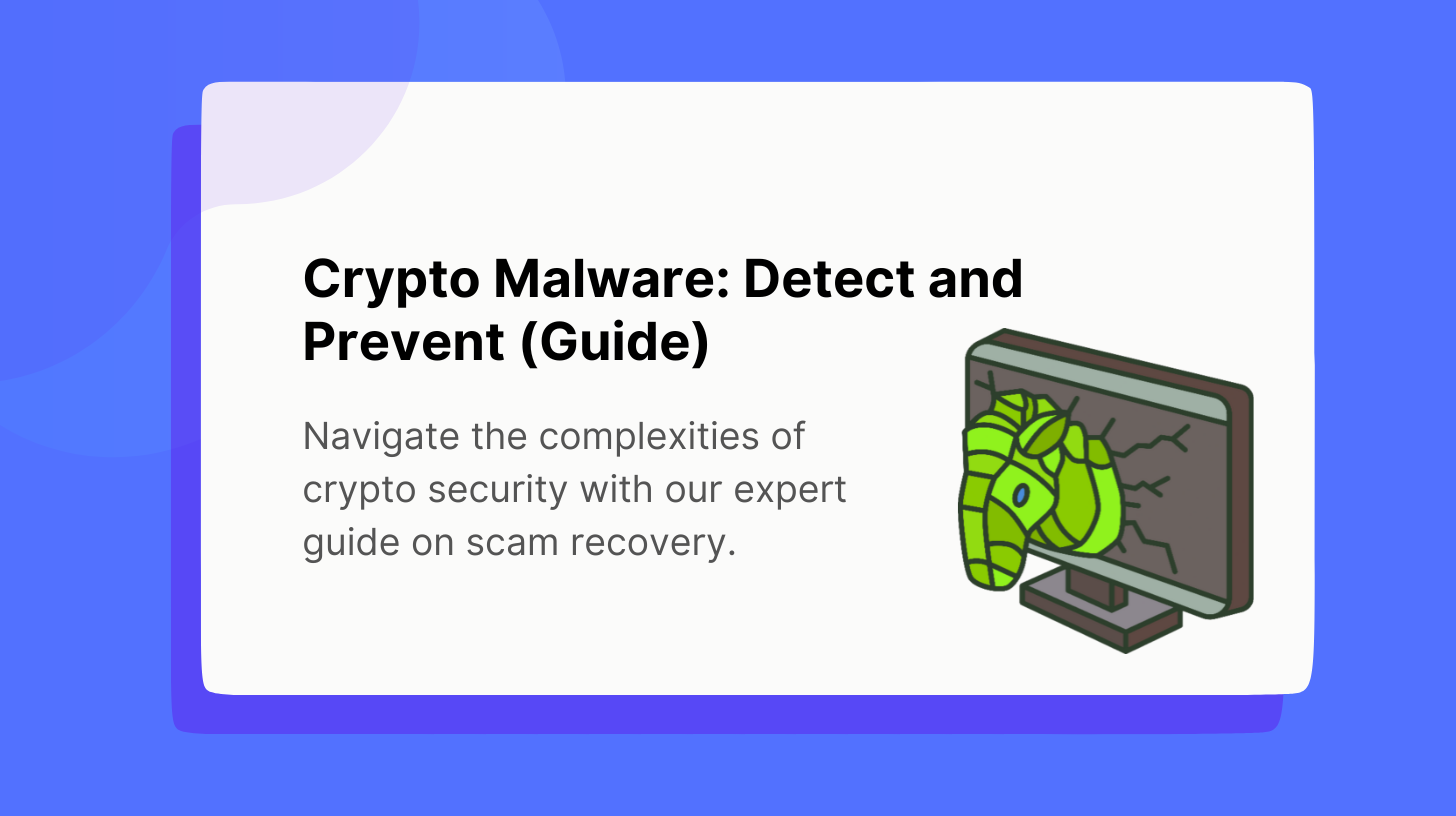In an era where digital currencies are booming, a new cyber threat looms large: crypto malware. This stealthy menace, known for hijacking computer resources to mine cryptocurrency, has seen a startling rise. In just the first half of 2023, over 300 million attacks were recorded, marking a nearly 400% increase from the previous year. The impact of these attacks stretches beyond just system performance degradation; they can lead to inflated energy bills and serious security breaches.
Crypto malware transcends the traditional boundaries of cyber threats. Unlike other forms of malware, it clandestinely hijacks systems, siphoning off computational power and electricity, often going undetected for extended periods. The consequences are far-reaching – from severely degraded system performance to inflated power bills, and in more sinister scenarios, leading to outright information theft and system hijacking. Furthermore, with crypto payments to ransomware attackers reaching a staggering $449.1 million in the first half of 2023, the financial implications of these attacks are profound and far-reaching.
As we delve into the complex world of crypto malware, it’s imperative to understand its nuances – from how it infiltrates systems to the various forms it can take, and most importantly, how individuals and organizations can shield themselves from this covert menace. In this article, we will explore the intricate workings of crypto malware, examine its impact, and arm you with the knowledge and strategies to detect, prevent, and respond to this burgeoning cyber threat. Join us as we navigate the murky waters of crypto malware, illuminating the path to a more secure digital future.
Section 1: Understanding Crypto Malware
Crypto malware, a term that has become increasingly prevalent in cybersecurity discussions, refers to a specific type of malicious software designed to hijack computer resources for the purpose of mining cryptocurrency. This exploitation is not only a violation of privacy but also a significant drain on the affected system’s resources.
What is Crypto Malware?
At its core, crypto malware is a form of cyber intrusion. Unlike traditional malware, which might aim to steal data or damage systems, crypto malware’s primary objective is to use the processing power of infected devices to mine cryptocurrencies like Bitcoin or Ethereum. This process involves solving complex mathematical problems that validate and record cryptocurrency transactions, a task that requires substantial computational power and energy.
How Does It Operate?
Crypto malware typically infiltrates systems through common vectors like phishing emails, malicious websites, or infected software downloads. Once inside a system, it operates silently, making it particularly insidious. Users might not even realize their device is infected, as the malware works in the background, allocating a portion of the device’s processing power to mine cryptocurrency.
How to know if you have a malware?
The symptoms of a crypto malware infection can be subtle. They often manifest as a noticeable slowdown in computer performance, higher than usual electricity bills, or the device overheating. These signs are the result of the malware utilizing the device’s resources to their maximum capacity, often without the user’s knowledge.
Distinction from Other Malware
What sets crypto malware apart from other types of malicious software is its purpose. While other malware types might aim to steal personal information, hold data for ransom, or corrupt files, crypto malware is primarily focused on generating profit through cryptocurrency mining. It doesn’t typically damage files or systems but rather exploits them for computational power.
In the following sections, we will delve deeper into the types of crypto malware, how to detect its presence, and strategies to protect against this covert cyber threat. Understanding the nature of crypto malware is the first step in building a robust defense against this modern digital menace.
Section 2: The Impact of Crypto Malware
The impact of crypto malware extends far beyond the confines of individual computer systems. Its ramifications are both broad and significant, affecting users, organizations, and even the broader digital ecosystem. Understanding these impacts is key to appreciating the full scope of this cyber threat.
System Performance Degradation
One of the most immediate effects of crypto malware is the degradation of system performance. Infected devices often experience slowed operations due to the malware consuming a significant portion of processing power for mining activities. This not only hampers the efficiency of the device but can also lead to accelerated hardware wear and tear due to constant overuse.
Increased Energy Consumption
Crypto malware causes an increase in energy consumption, which can be particularly noticeable in large-scale infections within organizations. The energy-intensive process of mining cryptocurrencies means that infected systems draw more power, leading to higher electricity bills. This aspect of crypto malware not only affects the finances of the affected parties but also contributes to a larger environmental impact due to increased energy usage.
Security Vulnerabilities
While the primary purpose of crypto malware is to mine cryptocurrency, its presence can expose the infected system to further vulnerabilities. It can act as a gateway for other malicious activities, such as data theft or the introduction of additional malware. The compromised system becomes a weak link in the security chain, posing a risk not just to the individual user but also to networks and organizations.
Financial Consequences
The financial impact of crypto malware is twofold. Firstly, for the attackers, it represents a source of income, as the mined cryptocurrency translates into financial gain. For the victims, however, the consequences include not only the potential loss of funds due to increased utility bills but also the costs associated with remediation efforts, such as system cleanups, hardware replacements, or increased cybersecurity measures.
Broader Implications
On a larger scale, the proliferation of crypto malware contributes to the overall landscape of cyber threats. It represents an evolving challenge for cybersecurity professionals and necessitates continual advancements in security technology and practices. The rise in crypto malware attacks also underscores the need for increased awareness and education on cybersecurity among users.
In the next sections, we will explore the various types of crypto malware, their detection, and the most effective strategies for prevention and response. By understanding the extensive impact of this malware, users and organizations can better prepare and protect themselves from its reach.
Section 3: The Scale of the Threat
The threat posed by crypto malware is not just widespread but also rapidly escalating. This section aims to shed light on the scale of this threat, highlighting its prevalence and the alarming trends in its growth.
Prevalence of Crypto Malware
Crypto malware has become one of the most prevalent forms of cyber threats in recent times. In the first half of 2023, the number of attacks soared to over 300 million, marking a near 400% increase from the previous year. This statistic alone paints a stark picture of the growing appeal of crypto malware among cybercriminals, driven by the lucrative prospects of cryptocurrency mining.
Financial Motivations and Crypto Payments
The financial motivations behind these attacks are significant. The increase in crypto malware attacks correlates with the rise in crypto payments to ransomware attackers, which hit $449.1 million in the first half of 2023. This substantial sum underscores the profitability of such attacks for cybercriminals and the serious financial implications for victims.
Notable Examples of Attacks
Understanding the scale of the threat also involves examining notable examples. High-profile attacks such as CryptoLocker, WannaCry, and NotPetya have demonstrated the devastating capabilities of crypto malware. These attacks not only caused widespread disruption but also signaled a shift in the sophistication and strategic approach of cybercriminals.
The Growing Complexity of Crypto Malware
The evolution of crypto malware presents a growing challenge. Cybercriminals are continually refining their methods, making the malware more elusive and harder to detect. This complexity means that traditional cybersecurity measures may not always be effective, requiring a more advanced and proactive approach to defense.
Global Impact
The impact of crypto malware is global, affecting individuals, businesses, and governments across the world. The borderless nature of the internet and the decentralized aspect of cryptocurrencies make this a universal challenge, transcending geographical and jurisdictional boundaries.
In the next section, we will explore the different types of crypto malware, providing insight into their unique characteristics and how they operate. Understanding the diversity of these threats is crucial in formulating effective strategies to detect and mitigate their impact.
Section 4: Types of Crypto Malware
Crypto malware comes in various forms, each with its unique characteristics and modes of operation. Understanding these types helps in better recognizing and defending against these threats.
Cryptojacking Scripts
One of the most common forms of crypto malware is cryptojacking scripts. These are malicious scripts that can be embedded in websites or delivered through phishing emails. Once a user visits an infected website or opens a malicious email, the script automatically executes, using the user’s device to mine cryptocurrency. These scripts are often hard to detect as they run silently in the background.
Trojan-Based Crypto Mining Malware
Trojans are another prevalent type of crypto malware. Disguised as legitimate software, these Trojans, once installed, use the resources of the host computer to mine cryptocurrency. They are more invasive than cryptojacking scripts, as they can also steal sensitive information and cause more direct damage to the system.
Browser-Based Miners
Browser-based miners operate through internet browsers. When a user accesses a website infected with a mining script, the script uses the browser’s processing power to mine cryptocurrency. These miners are typically less aggressive but can significantly slow down computer performance and browser response times.
Fileless Crypto Mining Malware
Fileless crypto mining malware is particularly stealthy, as it resides in the memory of the system and leaves no trace on the hard drive. It is more difficult to detect and remove because it doesn’t involve traditional files and often uses legitimate system processes to operate, blending in with normal system activity.
Mobile Crypto Malware
With the increasing use of mobile devices, crypto malware has also evolved to target smartphones and tablets. Mobile crypto malware often comes disguised as a legitimate app and, once installed, uses the device’s resources to mine cryptocurrency. These apps can also cause battery drain and overheating issues.
Ransomware with Crypto Mining Capabilities
Some ransomware variants have been developed to include crypto mining capabilities. In addition to encrypting the victim’s files and demanding a ransom, these malware types also use the infected system for mining operations, adding an additional layer of exploitation.
In the next section, we will discuss strategies for detecting these various types of crypto malware. Being able to identify the presence of crypto malware is crucial in taking swift actions to mitigate its impact and prevent further infections.
Section 5: Detection and Prevention Strategies
Detecting and preventing crypto malware requires a multi-faceted approach, leveraging both technological solutions and user awareness. As the nature of crypto malware evolves, so too must our strategies to combat it.
Detecting Crypto Malware
- Monitoring System Performance: A sudden drop in system performance or increased CPU usage can be indicative of crypto malware activity. Regular monitoring of system resources is crucial for early detection.
- Network Traffic Analysis: Unusual network activity, such as spikes in traffic to unknown IP addresses, can signal the presence of crypto mining activities. Implementing network monitoring tools can help in identifying such anomalies.
- Advanced Malware Detection Tools: Employing advanced antivirus and anti-malware software that are updated regularly can detect and remove crypto malware. These tools use heuristic analysis and behavioral patterns to identify potential threats.
- Fileless Malware Detection: Specialized security solutions are required to detect fileless crypto malware, as these do not rely on traditional files. Monitoring and analyzing system memory and script behavior are key strategies.
Preventing Crypto Malware
- Regular Software Updates: Keeping all software, including operating systems and browsers, updated can prevent crypto malware infections. Many attacks exploit vulnerabilities in outdated software.
- Educating Users: Awareness is a powerful tool. Educating users about the dangers of phishing emails, suspicious downloads, and unsecured websites can significantly reduce the risk of crypto malware infections.
- Ad Blockers and Anti-Crypto Mining Extensions: Using ad blockers and browser extensions specifically designed to block crypto mining scripts can prevent cryptojacking through web browsers.
- Network Security Measures: Implementing firewalls, intrusion detection systems, and proper network segmentation can help prevent unauthorized access and limit the spread of malware within an organization.
- Mobile Device Management (MDM): For organizations, implementing MDM solutions can help monitor and secure mobile devices to prevent the installation of malicious apps that could be used for crypto mining.
- Regular Backups: While not a preventive measure against infection, regular backups can mitigate the impact of malware, including ransomware variants with crypto mining capabilities.
In the next section, we’ll delve into the differences between crypto malware and ransomware, shedding light on how these distinct threats operate and affect users and systems differently. Understanding these distinctions is key to implementing targeted security measures and response strategies.
Section 6: Differentiating Crypto Malware and Ransomware
Understanding the differences between crypto malware and ransomware is critical, as each requires distinct strategies for prevention and response. While they both represent significant cybersecurity threats, their objectives and impacts differ markedly.
Objectives and Operation
- Crypto Malware: The primary goal of crypto malware is to use the infected device’s resources for cryptocurrency mining. This process is usually covert, with the malware operating silently in the background without the user’s knowledge. It does not typically involve direct financial demands from the victim.
- Ransomware: In contrast, ransomware aims to extort money from victims. It encrypts the victim’s data and demands a ransom, usually in cryptocurrency, for the decryption key. Ransomware attacks are overt and immediately noticeable to the victim.
Impact on the Victim
- Crypto Malware: The impact here is more indirect. Crypto malware affects system performance, increases electricity usage, and can potentially shorten hardware lifespan. However, it generally does not result in data loss or direct financial loss unless it co-opts the system for other malicious purposes.
- Ransomware: The impact of ransomware is immediate and severe. Victims are denied access to their data, which can disrupt personal and business operations. Paying the ransom also involves a direct financial loss, and there’s no guarantee that access to data will be restored.
Detection and Mitigation
- Crypto Malware: Detection often involves monitoring system performance and network traffic. Mitigation strategies focus on preventing unauthorized use of system resources and include using antivirus tools, ad blockers, and network monitoring solutions.
- Ransomware: Detection requires advanced cybersecurity measures since ransomware often encrypts files quickly upon infection. Mitigation involves robust data backup strategies, employee training to recognize phishing attempts, and deploying ransomware-specific security solutions.
Evolving Threats
Both crypto malware and ransomware are evolving. Some crypto malware now includes ransomware-like capabilities, such as the DoubleFinger malware, which steals cryptocurrency wallets while also deploying ransomware techniques. This convergence of capabilities signifies a sophisticated and evolving threat landscape.
In conclusion, while both crypto malware and ransomware pose serious threats to cybersecurity, their distinct objectives and impacts necessitate tailored approaches for detection, prevention, and response. In the next section, we will look at the legal and ethical dimensions surrounding these cyber threats, further exploring their implications in the digital realm.
Section 7: Legal and Ethical Dimensions
The rise of crypto malware and ransomware not only presents technological challenges but also raises significant legal and ethical questions. Understanding these aspects is crucial for a comprehensive approach to dealing with these cyber threats.
Legal Implications
- Legislation Against Malware: Many countries have laws against the creation and distribution of malware, including crypto malware and ransomware. However, the global and often anonymous nature of these attacks complicates legal enforcement.
- Prosecution Challenges: Identifying and prosecuting perpetrators is challenging due to the anonymity afforded by cryptocurrencies and the cross-jurisdictional nature of cybercrimes. International cooperation is often required for effective legal action.
- Legal Responsibility for Prevention: Organizations face legal obligations to protect sensitive data. Failure to implement adequate cybersecurity measures can lead to legal repercussions, including fines and lawsuits, especially under data protection laws like GDPR.
Ethical Concerns
- Use of Hijacked Resources: Crypto malware raises ethical questions about the unauthorized use of an individual’s or organization’s computing resources. It’s a form of digital exploitation that often goes unnoticed by the victim.
- Ransom Payments: Ethical dilemmas arise regarding the payment of ransoms in ransomware attacks. Paying a ransom can fund criminal activities and encourage further attacks, yet it may be the only way to regain access to critical encrypted data.
- Responsibility to Report: There is an ethical responsibility for victims of such attacks to report them. Reporting can aid in tracking and potentially prosecuting attackers and also helps in understanding and mitigating the broader threat landscape.
Ethical Use of Cryptocurrencies
The misuse of cryptocurrencies in these malware attacks also brings to the forefront ethical considerations regarding the use of digital currencies. The decentralized nature of cryptocurrencies is often exploited by cybercriminals, yet this same feature is what makes cryptocurrencies innovative and valuable.
Moving Forward
As we move forward, it’s essential for laws to evolve to better address the challenges posed by crypto malware and ransomware. Similarly, ethical considerations should guide actions and policies, both at individual and organizational levels, to foster a secure and responsible digital environment.
In the next section, we will explore the future landscape of crypto malware, anticipating emerging trends and preparing for potential new threats in the evolving cybersecurity arena.











